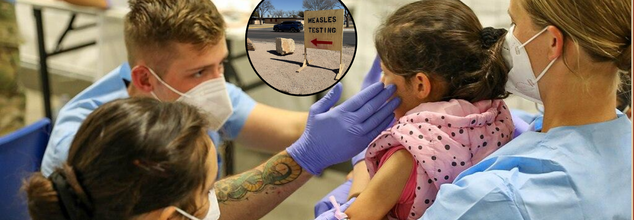
Credits: Canva
Forget Love, Remember This: Married People May Be More At Risk For Dementia, Says Study
For decades, marriage has been widely regarded as a "protective" factor against many health conditions, ranging from heart disease to depression. The standard narrative has been that the married live longer, are healthier, and enjoy improved mental well-being than the unmarried. But what if that presumption, especially when it comes to cognitive health, doesn't quite hold up?
A new study in Alzheimer's & Dementia flips on its head this traditional wisdom. Married people are at much greater risk of dementia than divorced, widowed, or never-married adults, the 2025 study by Florida State University and the University of Montpellier researchers found.
The longitudinal study followed 24,107 older adults for 18 years. The participants ranged in age from 50 to 104 (mean age: 72) and were recruited through the National Alzheimer's Coordinating Center, which has more than 42 Alzheimer's Disease Research Centers throughout the U.S. None of the participants had been diagnosed with dementia at the time of enrollment, although some showed symptoms of mild cognitive impairment.
The results were dramatic:
- Marrieds had a 50% greater risk of getting dementia than their unmarried counterparts.
- Never-married subjects had the lowest risk for dementia, although the difference was not statistically significant between them and divorced or widowed subjects.
- Even among the subjects who at the beginning presented with mild cognitive impairment, those who were not married were less likely to reach full dementia.
- Participants who lost their spouses in the course of the study demonstrated a reduced risk of developing dementia when compared with those who remained married.
The findings contradict the long-standing assertion that marriage invariably improves health and indicate that marital status might play a more complicated role in cognitive aging than heretofore assumed.
Why Might Unmarried People Fare Better Cognitively?
Although the researchers could not identify a single definitive explanation for these findings, they presented several plausible hypotheses.
One of the strongest findings was that never-married and unmarried people generally have more robust and varied social networks. They are more likely to have active friendships, be involved in their communities, and develop significant relationships outside of a marital bond.
Married people are less socially integrated and have less frequent, lower-quality interactions in their networks than are unmarried people," the authors of the study wrote.
Moreover, being single tends to demand a higher level of self-sufficiency, which prompts individuals to remain mentally active by taking care of their lives on their own. The psychological complexity and variety of experiences in the lives of unmarried individuals may possibly serve as a buffer against cognitive decline.
Rethinking the Health Benefits of Marriage
This research is part of a growing body of evidence challenging the general assumption that marriage is good for health all the time. Previous studies have consistently produced correlations between marriage and health, but these rarely control for confounding variables such as access to health care, resources, or prior health status.
Significantly, correlation is not causation. Just because married individuals often look healthier sometimes doesn't imply that marriage causes it. Instead, it might be that healthier individuals are likely to marry or that marriage gives economic and logistical benefits that support general health.
Actually, a 16-year Swiss study with more than 11,000 adults discovered that marriage did not benefit participants' health—and health actually reduced after marriage in some instances.
As populations in societies worldwide contend with aging populations and increasing rates of dementia, the results from this new study provide essential public health planning. Marriage as a protective factor assumptions may no longer be valid, particularly when estimating dementia risk among older adults.
The clinicians and policymakers can also be faced with the possibility of considering broader approaches that will enhance cognitive function in all the elderly, including those who are married and not married. Such initiatives can reinforce community ties, foster lifelong education, promote mental and physical stimulation, and provide support systems extending beyond the nuclear family structure.
As larger numbers of older persons become divorced, widowed, or never married, it will become crucial to know how these varied life circumstances influence brain health as the foundation of building equal-opportunity, effective health interventions.
Although this paper presents highly compelling findings, further investigation is required to disentangle the intricate dynamics among relationship quality, social connectedness, stress, lifestyle habits, and their roles in cognitive aging.
Is marital conflict stress a cause of cognitive decline? Does marriage caregiving wear down neurological well-being? Or is it the psychological autonomy fostered by the unmarried that is the secret protector against dementia? These are questions left open—and in need of exploration.
In a world in which marriage is so often idealized as the gold standard of a happy and fulfilling life, these findings serve as a bracing—and empowering—reminder- there is no single formula for aging well.

Credits: Canva
World Health Day 2025: History, Theme, Importance, And Significance
The World Health Organization (WHO) states that every year on April 7, the World Health Day is observed to draw attention to a specific health topic of concern to people all over the world. The date of 7 April marks the anniversary of the founding of WHO in 1948.
History of World Health Day
This day was first proposed to be celebrated at the First Health Assembly in 1948, and ever since, from 1950, it has been observed. It marks the founding anniversary of the WHO, which a global platform that works on urgent health issues as well as promoting awareness. The WHO also addresses critical health concerns across the world and remains free from political influences. It also uses this day to draw international attention on health priorities.
The WHO notes that when diplomats met to form the United Nations in 1945, one of the things they discussed was setting up a global health organization, this is how WHO's Constitution came into being from April 7, 1948. This is the date that we now celebrate every year as World Health Day.
Theme Of World Health Day
Each year, the WHO announces a specific theme for the World Health Day. This is to spotlight a key area of concern in the health sector. This year, the theme for 2025 is "Healthy Beginnings, Hopeful Futures".
The WHO on its official X handle posted a collaboration with the Ministry of Health and the authorities of Hera to deliver an Integrated Health Program observing this year's theme:
This year's campaign and the theme focus on collaborating with governments and health bodies to invest in impactful initiatives that can reduce preventable deaths. It also aims to improve long-term well-being of mothers and newborn.
The focus points of the theme are:
Helping every woman and baby survive and thrive: The WHO mentions that based on currently published estimates, close to 300,000 women lose their life due to pregnancy or childbirth each year. Whereas 2 billion babies die in their first month of life and 2 million are stillborn. This means roughly 1 preventable death every 7 seconds.
Listening to women and supporting families: WHO mentions that women and families everywhere need high quality care that supports them physically and emotionally, before, during and after birth. Health systems thus must evolve to manage the health issues that impact maternal and newborn health.
"The health of mothers and babies is the foundation of healthy families and communities, helping ensure hopeful futures for us all," notes WHO.
Significance Of World Health Day
For the last five decades, the World Health Day, which celebrates the founding day of WHO has played an important role in highlighting key health issues. It has focused on various health issues including mental health and well-being, maternal and child health, and the growing impact of climate change on global health.
The campaign also facilitates conversations and discourse around health, which can then promote awareness among people. This day therefore serves as a reminder to unite global efforts and direct attention towards building a healthier and safer communities around the world.

Second Child Dies In Texas Measles Surge, Nearly 500 Infected And Counting
The United States is witnessing its most significant measles outbreak in over a decade, with Texas at the epicenter. The recent death of an 8-year-old child in Lubbock marks the second pediatric fatality from the disease in the state this year. The child, who was unvaccinated, died of "measles pulmonary failure" — a severe complication of the viral illness — at University Medical Center Children’s Hospital.
This latest fatality, following the February death of another school-aged unvaccinated child, underscores the growing public health emergency in Texas and beyond. As of early April, the Texas Department of State Health Services has confirmed 481 measles cases — a 14% increase over the previous week — with total U.S. cases exceeding 628 across 21 states and Washington D.C.
Both child victims were reportedly healthy before contracting measles, with no underlying conditions. Yet neither had received the MMR (measles, mumps, rubella) vaccine, which the Centers for Disease Control and Prevention (CDC) confirms is 97% effective in preventing measles after two doses.
According to the CDC, about 1 in 20 children with measles will develop pneumonia — the most common cause of death from measles in young children. Additionally, 1 to 3 of every 1,000 infected children may die from respiratory or neurological complications. Measles also induces "immune amnesia," weakening the immune system for months or even years.
"The disease has returned because a critical percentage of parents have chosen not to vaccinate their children, in large part due to misinformation," said Dr. Paul Offit, Director of the Vaccine Education Center at Children’s Hospital of Philadelphia.
The outbreak that began in Seminole, Texas, in January has spread into New Mexico, Oklahoma, Kansas, and even Mexico. New Mexico has reported 54 cases, Oklahoma 10 (eight confirmed and two probable), and Kansas 24, many likely linked to the Texas outbreak.
Most cases are in individuals under 18 years old, and the majority of them were unvaccinated. Public health officials fear that these figures may be an undercount, as many people with mild or unreported symptoms may not seek medical care or testing.
“This virus is spreading fast, and it’s hitting our youngest, most vulnerable populations the hardest,” said Katherine Wells, Public Health Director in Lubbock.
Hospitals in West Texas have been strained by the surge. University Medical Center Children’s Hospital and Covenant Children's Hospital have collectively treated dozens of children for measles-related complications — from respiratory failure to vitamin A toxicity in children given alternative treatments without medical oversight.
Dr. Lara Johnson, Chief Medical Officer at Covenant, reported treating multiple children for liver issues caused by excess vitamin A. “We understand the desperation parents may feel, but unregulated treatment is dangerous,” she warned.
U.S. Health and Human Services Secretary Robert F. Kennedy Jr. has faced growing scrutiny over what many in the medical community call a slow and inadequate response. Once a vocal anti-vaccine advocate, Kennedy has only recently acknowledged the importance of the MMR vaccine publicly.
Kennedy visited Gaines County, the outbreak’s epicenter, over the weekend to meet with grieving families and issued a statement urging vaccination. However, critics, including FDA’s former vaccine chief Dr. Peter Marks, say his past stance has contributed to vaccine hesitancy and misinformation.
“This is the epitome of an absolute needless death,” Marks said. “These kids should get vaccinated — that’s how you prevent people from dying of measles.”
The CDC has deployed teams to West Texas and continues to urge parents to immunize their children. Dr. Manisha Patel, the agency’s incident manager for the outbreak, emphasized that during outbreaks, even babies as young as six months should receive their first dose of the MMR vaccine.
“This isn’t the time to wait. Parents need to act now,” Patel said at a press conference. She urged families not to delay seeking medical attention for any child showing measles symptoms such as high fever, rash, or persistent cough.
Still, the CDC’s own messaging has been mixed. A spokesperson recently referred to vaccination as a "personal decision," diverging from long-standing public health guidance — a shift that has puzzled and concerned many healthcare professionals.
With more than double the measles cases reported this year compared to all of 2024, the U.S. is now on a dangerous trajectory. The outbreak is expected to continue for several months, possibly into 2026, unless drastic steps are taken to increase immunization rates.
Senator Bill Cassidy of Louisiana, a Republican and physician, has called for Kennedy to testify before the Senate Health Committee. “Everyone should be vaccinated! There is no treatment for measles. No benefit to getting measles,” Cassidy wrote on X.
Experts agree that restoring public trust in vaccines, bolstering access to immunization clinics, and combating misinformation are essential next steps. If not, more children — like the ones in Texas — will pay the ultimate price.

World Health Day 2025 Puts Maternal And Newborn Health In Focus- Know Theme And Significance
Every year on April 7, World Health Day commemorates the establishment of the World Health Organization (WHO) in 1948. But more than a symbolic date, it is a brazen call to tackle pressing global health challenges. In 2025, the focus has shifted toward an issue central to human development and survival—maternal and newborn health.
This year’s theme, “Healthy Beginnings, Hopeful Futures,” isn’t just a slogan—it signals the beginning of a year-long WHO-led campaign that prioritizes the well-being of mothers and babies. In a world where nearly 300,000 women die each year from pregnancy-related causes and over 2 million newborns don't survive their first month, the message is loud and clear: we must act now.
Mothers' and babies' health isn't a women's issue—it's a global, family, and community issue. A healthy start in life is the foundation for future prosperity and health. If a mother lives through childbirth, if her newborn baby survives that critical neonatal period, the ripple effect reverberates out to the rest of society. Healthy children grow up with their mothers, which builds healthier communities and economies.
However, the global data is still grim. WHO estimates suggest that one preventable maternal or newborn death occurs every 7 seconds. Worse, 4 out of 5 nations are off track to achieve maternal survival goals by 2030, and 1 in 3 are at risk of failing to meet newborn death reduction targets.
What Does 'Healthy Beginnings, Hopeful Futures' Mean?
The WHO's campaign in 2025 will be aimed at preventing not just deaths but also making health systems more robust, pushing for equity, and providing women and newborns with quality care before, during, and after birth.
Important goals of this year's campaign are:
- To advocate for eliminating preventable newborn and maternal deaths
- To push for equitable access to quality care, particularly in rural and under-served areas
- Building postnatal care infrastructure, especially within the first 24 hours following childbirth—the time when the majority of maternal and newborn deaths are most likely to happen
- Facilitating mental health and noncommunicable disease care during the perinatal period
- Fostering inclusive laws and policies that protect women's health and rights
Understanding the Challenges
Consider India, for instance—a country that has progressed incredibly but continues to have mountainous challenges to overcome. India's maternal mortality ratio fell from 130 to 97 per 100,000 live births between 2014 and 2020. Yet the country still has 17% of all stillbirths and maternal deaths worldwide, a stark reminder of how much there is to be done.
In rural and disadvantaged communities, the availability of healthcare workers, postnatal care facilities, and emergency obstetric care remains very limited. A great number of infant deaths are due to preventable conditions such as sepsis, birth asphyxia, and conditions arising from preterm birth. Socioeconomic inequalities worsen these conditions, with women in poorer families frequently having no access to even basic maternal care.
What Needs to Change?
Enhancing newborn and maternal health is more than constructing hospitals—it's a matter of envisioning healthcare delivery systems that are sustainable, equitable, and women-focused.
That means:
- Increasing antenatal and postnatal care coverage to at least 80% as recommended by the WHO
- Training and mobilizing skilled birth attendants in underserved areas
- Establishing mother-supportive environments, such as clean water, adequate sanitation, and nutrition access
- Synchronizing mental health services with maternity care
- Securing policy-level protection by way of maternity benefits, parental leave, and anti-discrimination laws
Furthermore, health systems should also be in a position to handle indirect determinants of maternal death, like hypertension, diabetes, and mental illnesses, which are all underdiagnosed.
India's Pradhan Mantri Surakshit Matritva Abhiyan (PMSMA) and National Health Mission (NHM) have played a significant role in providing free monthly check-ups and institutional births. Programs such as Janani Suraksha Yojana (JSY) offer incentives to poor mothers to deliver safely.
Internationally, some areas such as Latin America and the Caribbean have already achieved WHO's goal of postpartum care coverage of 80%—serves as models that can be followed and replicated.
This year's theme also acknowledges that health is not born in clinics. It is a result of underlying human rights—education, decent shelter, wholesome food, clean air, and protection from violence and discrimination.
Policies that make women economically and socially empowered are as essential as policies for medical care. Whether legal protections for maternal leave or investing in girl child education, each move makes a difference to healthier generations.
Listening to Women, Supporting Families
At the center of this campaign is a crucial message—listen to women. Women require care that is respectful, compassionate, and inclusive. That means acknowledging the role of partners and families, supporting fathers, and providing community-based solutions that are responsive to cultural and socioeconomic settings.
Healthcare professionals, policymakers, and world leaders need to make listening to women's voices a priority, learn from their experiences, and co-create solutions that are effective on the ground.
As World Health Day 2025 unfolds, it calls on all of us—governments, health workers, communities, and individuals—to pledge ourselves to the health and dignity of mothers and newborns. Because when we invest in healthy beginnings, we create hopeful futures—not only for individuals, but for generations to come.
© 2024 Bennett, Coleman & Company Limited

